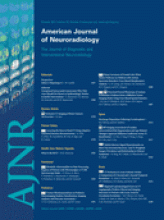Abstract
BACKGROUND AND PURPOSE: Because we had previously observed geometric changes of frontal lobe association pathways in children with ASD, in the present study we analyzed the curvature of these white matter pathways by using an objective TBM analysis.
MATERIALS AND METHODS: Diffusion tensor imaging was performed in 32 children with ASD and 14 children with typical development. Curvature, FA, AD, and RD of bilateral AF, UF, and gCC were investigated by using the TBM group analysis assessed by PFDR for multiple comparisons.
RESULTS: Significantly higher curvatures were found in children with ASD, especially at the parietotemporal junction for AF (left, PFDR < .001; right, PFDR < .01), at the frontotemporal junction for UF (left, PFDR < .005; right, PFDR < .03), and at the midline of the gCC (PFDR < .0001). RD was significantly higher in children with ASD at the same bending regions of AF (left, PFDR < .03, right, PFDR < .02), UF (left, PFDR < .04), and gCC (PFDR < .01).
CONCLUSIONS: Higher curvature and curvature-dependent RD changes in children with ASD may be the result of higher attenuation of thinner axons in these frontal lobe tracts.
Abbreviations
- AD
- axial diffusivity
- AF
- arcuate fasciculus
- ASD
- autism spectrum disorders
- CC
- corpus callosum
- Cg
- cingulum
- DTI
- diffusion tensor imaging
- FA
- fractional anisotropy
- gCC
- genu of corpus callosum
- GM
- gray matter
- MD
- mean diffusivity
- MNI
- Montreal Neurologic Institute
- PFDR
- false discovery rate P value
- RD
- radial diffusivity
- ROI
- region of interest
- TBM
- tract-based morphometry
- TD
- typically developing
- UF
- uncinate fasciculus
- © 2011 by American Journal of Neuroradiology












